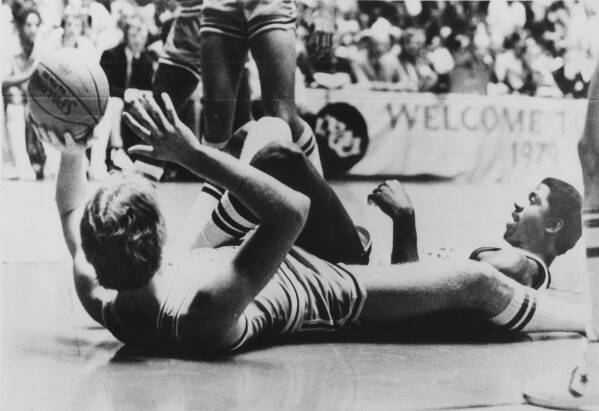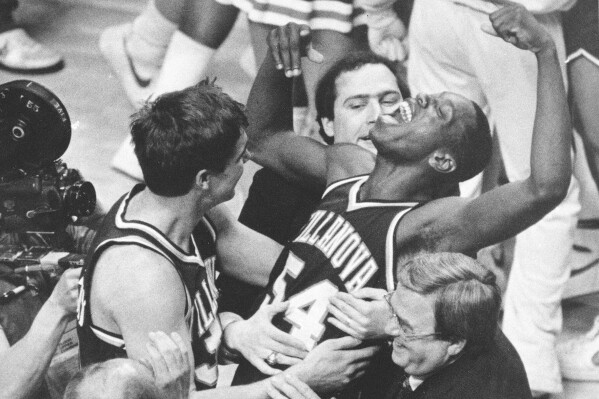Lifestyle
Bracketology a settled national pastime as the 2025 NCAA Tournament arrives

INDIANAPOLIS (AP) — When Bryce Yoder needs a study break this time of year, the college student flips on a TV and attends his favorite March Madness class — bracket science.
The 19-year-old sports management major at Indiana University-Indianapolis studies hard to learn the secrets of picking winners in the nearly dozen NCAA Tournament bracket pools he hopes to enter before Thursday’s first-round games. It takes time, patience and some lucky bounces to get those picks right.
Yoder is hardly alone. Millions of Americans — from hard-core sports junkies to casual fans and school alumni to those with no rooting interest — engage in this annual national pastime by filling out a tourney bracket and seeing how they fare. Winning is possible, though few hold out much hope of a perfect bracket: The NCAA says the odds of that are 1 in 9,223,372,036,854,775,808 if you wing it and a still-absurd 1 in 120.2 billion if you know a bit about hoops.
For players like Yoder, it’s more about proving he’s the best.
“The satisfaction of being right,” he said in explaining why he fills out so many brackets. “Really, it’s about having the best bracket possible, whether that’s with my friends and family or just the leaderboard over a random bunch of people that I’ve never met. I’m just so competitive.”
From online gambling to office pools to family contests, brackets are big business and a big distraction. A study released in 2023 by Challenger, Gray & Christmas, a work outplacement firm, estimated $17.3 billion is lost in productivity during the three-week tourney. A Finance Buzz survey back then also found 36% of employees tune into the games during work hours, and nearly 25% use paid time off or sick days.
Even elective surgery companies now advertise that customers can have mid-March procedures so they can recover — and watch basketball — at the same time.
In the beginning
It seems almost unfathomable today, but brackets meant virtually nothing for about the first 50 years of the NCAA tourney, which dates to 1939 and this year is holding its 86th edition.
During the ‘70s, though, the changes began in earnest.
The NCAA tourney expanded from 25 to 32 teams in 1975, the first year leagues could send two teams. Seeding started in 1978, and the field grew to 40 in 1979 and to 48 in 1980 when organizers dropped the restriction on how many league teams could play.
But the real revolution really with the 1979 title game between Michigan State and Indiana State.

Indiana State’s Larry Bird, left, lies on his back to toss the ball during a scramble with Earvin “Magic” Johnson, right, during NCAA Championship game in Salt Lake City, Utah, March 26, 1979. (AP Photo)
That Magic Johnson-Larry Bird matchup drew a 24.1 television rating, still the tourney record, and it gave everyone a glimpse into what college basketball’s biggest event could become at the same time an 8-year-old boy named Charlie Creme looked into his future.
“I cut the (men’s) bracket out of the newspaper in 1979 and had it on the pantry door in my family’s kitchen,” said Creme, now ESPN’s women’s basketball bracketologist. “I was filling it out, making actual predictions and I couldn’t wait till a game ended and I could run up to the pantry door and advance the next team in the tournament. Within a couple years, I was making my own brackets with big pieces of oak tag (paper) and a pencil and a ruler.”
Soon, he’d have company as the tourney grew.
America’s first all-sports network, ESPN, broadcast the 16 first-round games, 12 on tape delay, in 1980. CBS wrested the broadcast rights away from NBC in 1982 with a three-year deal for $16 million annually and the promise of expanded coverage including the first televised selection show.
Suddenly, brackets mattered and broadcasters such as Dick Vitale stoked long debates over which teams belonged, which did not and who would win games. Live, daily telecasts on ESPN spurred interest, too, heading into 1985, the first 64-team field and introduced a future NCAA executive to fill out the bracket.
“The first one I remember filling out was 1985,” said Dan Gavitt, the son of Big East co-founder Dave Gavitt and now the NCAA senior vice president for basketball. “I had four Big East teams in the Final Four and I was right on three of them. Boston College got beat by Memphis in in the regional finals.”
Gavitt, like Creme, was hooked and brackets became fashionable.
Could it happen again on the women’s side? Perhaps.
After seeing ticket sales, television ratings and coverage of the sport soar in the last few years with more to come thanks to stars such as Paige Bueckers, Hannah Hidalgo and JuJu Watkins, Creme thinks women’s brackets are on a similar trajectory.
“We might be seeing 1985-95,” Creme said. “Star players in the men’s game back then, stuck around longer. Right now we’re in that period where Caitlin Clark played four years in college and as the rules stand now, JuJu Watkins has to play four years and Paige could if she wanted — she’s not going to — but could stick around another year. That’s where the men’s game was in that period.”
Upset city, baby
In its infancy, the bracket phenomenon was geared to teenagers and college students like Yoder who watched multiple games.
Soon, office pools and games among family members with entry fees and prize money became popular, too. In some cases, all you did was pluck a name out of a hat.
Back then, the NCAA frowned on such practices, labeling it gambling. Today, the NCAA runs its own online bracket game as part of its “fan engagement.”
Still, the prize pool only fueled interest. So did the 1980s national championship games that became must-see TV — and the upset factor.

FILE – In this April 1, 1985, file photo, Villanova’s Ed Pinckney (54) yells out as he is surrounded by teammates after defeating Georgetown 66-64 in the NCAA college basketball Final Four championship game, in Lexington, Ky. (AP Photo/Gary Landers, File)
From surprising title runs by North Carolina State in 1983 and Villanova in 1985 to Princeton’s near-upset of Georgetown in 1989, it seemed every team was in the mix and nobody would pick all the winners.
“There will never be a perfect bracket,” ESPN men’s basketball bracketologist Joe Lunardi said. “That’s just not going to happen. When Warren Buffet offered $10 million for perfect bracket, he knew he wasn’t going to pay that out.”
Those daunting odds haven’t stopped anyone from filling out brackets.
“If I feel really strongly about a game, I’ll probably pick the same outcome more times than not,” Yoder said, referring to how he handles multiple brackets. “But I try to throw some silly type of stuff that wouldn’t necessarily have a good chance of happening, like upsets, because that’s just naturally going to happen.”
The tools
In this May 27, 2010 file photo, President Barack Obama looks over the bracket with Duke University basketball Coach Mike Krzyzewski in the Rose Garden of the White House in Washington, where he honored the team. (AP Photo/Alex Brandon, File)
Figuring out how to pick teams and games has evolved the years.
Selection committee members use tangible measures such as wins and losses, strength of schedule and NET rankings to round out the 68-team field. Other measures include quad victories, which vary in how they’re compiled and applied. In an era of analytics, sites such as kenpom.com have become regular components for hard-core and casual fans.
The NCAA certainly is paying attention.
Gavitt said he filled out brackets in the early years of the NET just to see how reliable the rankings were to results And when the topic of expansion is broached, NCAA officials look to see how the potential new bracket would fit on a single printed page.
The question, of course, is how far can this go and whether artificial intelligence can become the next big thing when it comes to picking winners.
“If AI did it, then the analysis would not be as much fun or as interesting,” Creme said. “I don’t know that the NCAA would ever go that far. I kind of hope not because I like the human element. If it’s eliminated, if we know the AI formula, then it’s sort of over.”
___
AP March Madness bracket: https://apnews.com/hub/ncaa-mens-bracket and coverage: https://apnews.com/hub/march-madness
Get poll alerts and updates on the AP Top 25 throughout the season. Sign up here.
